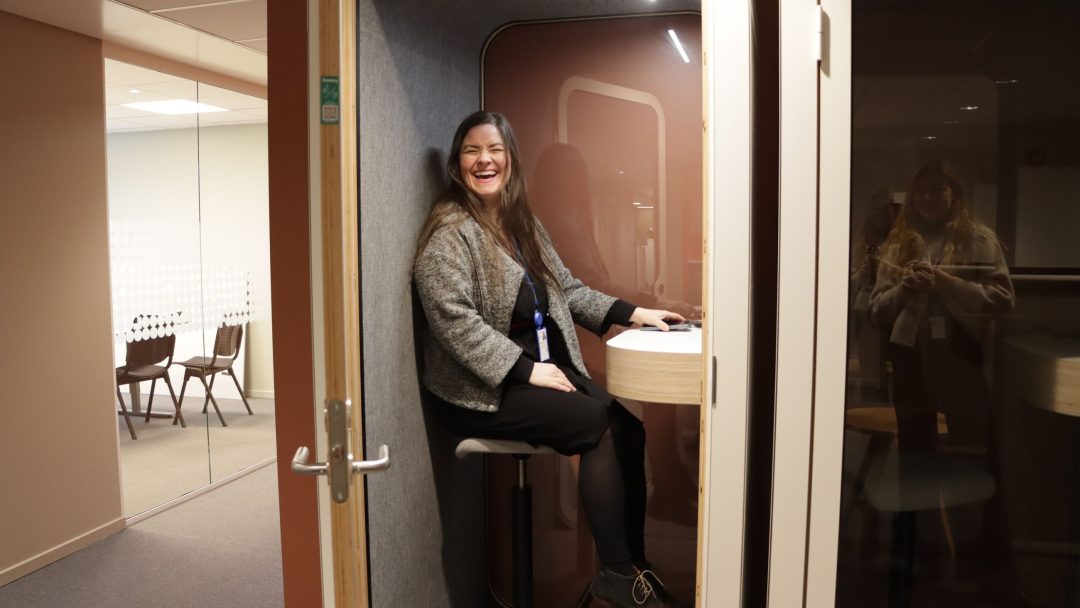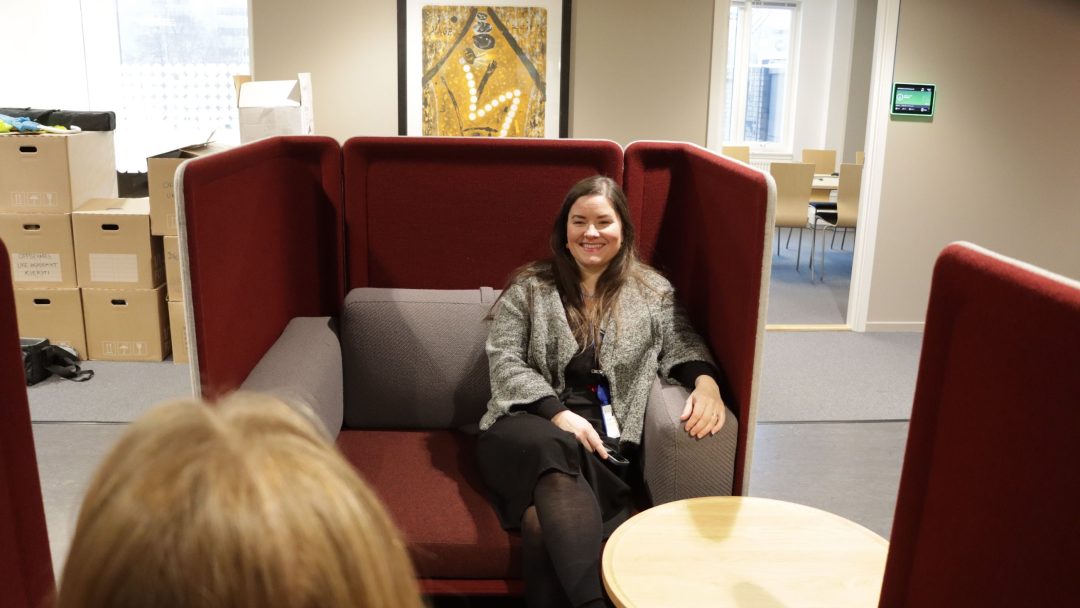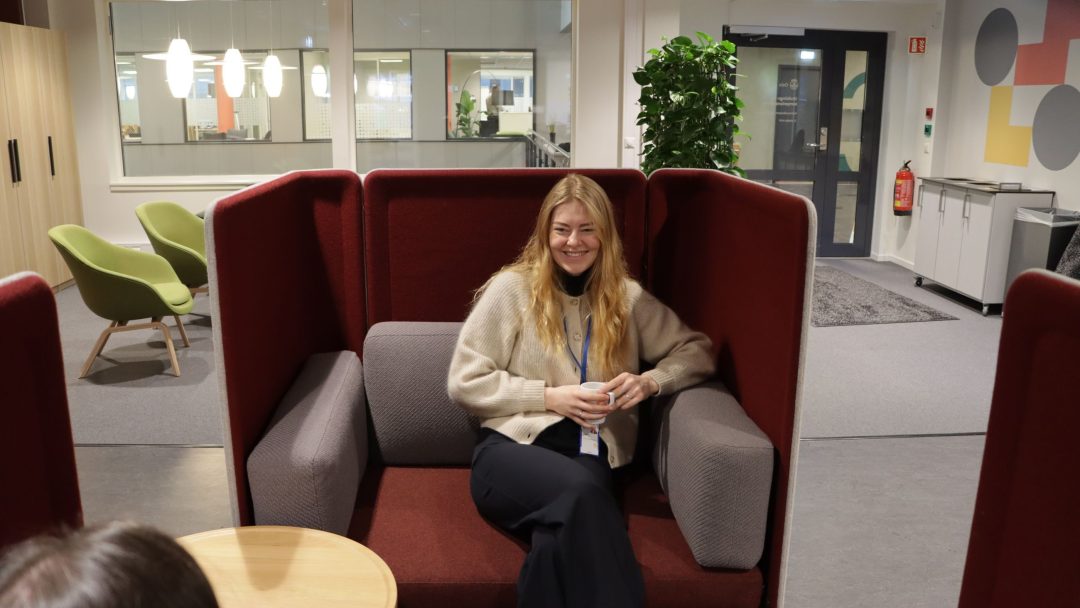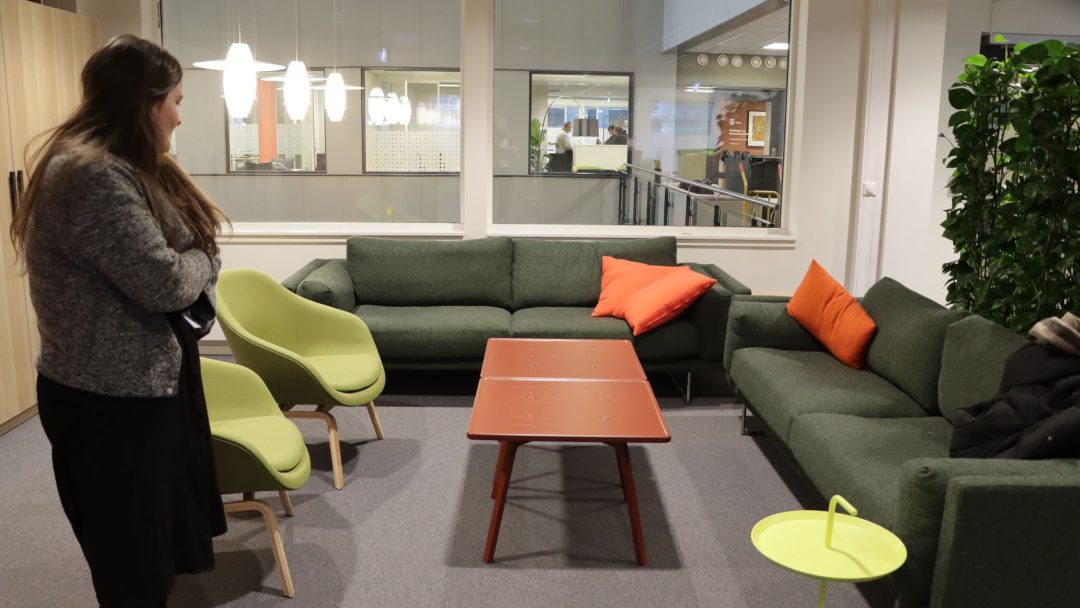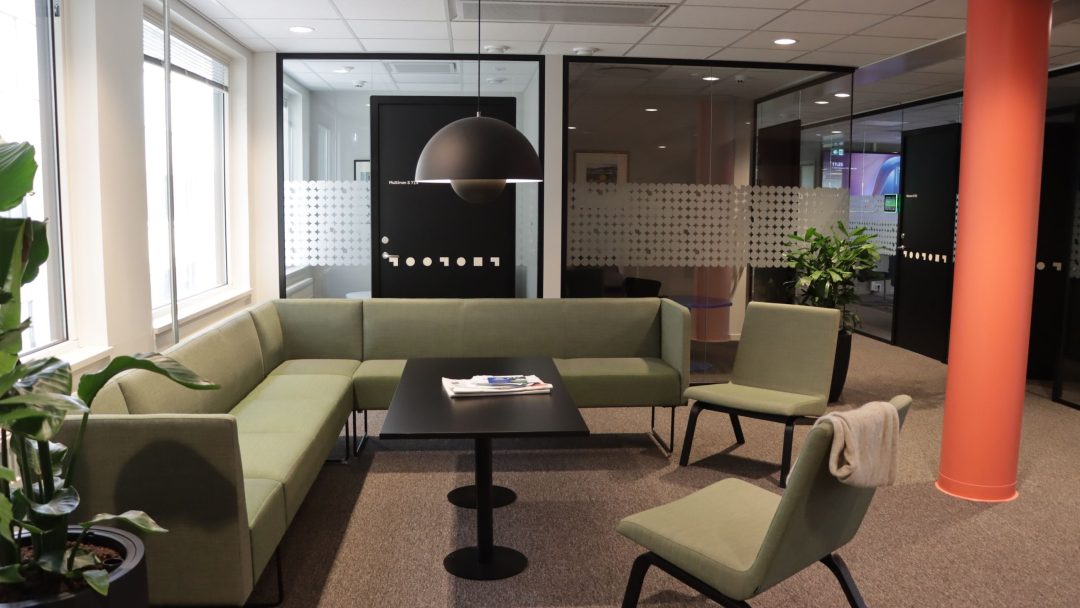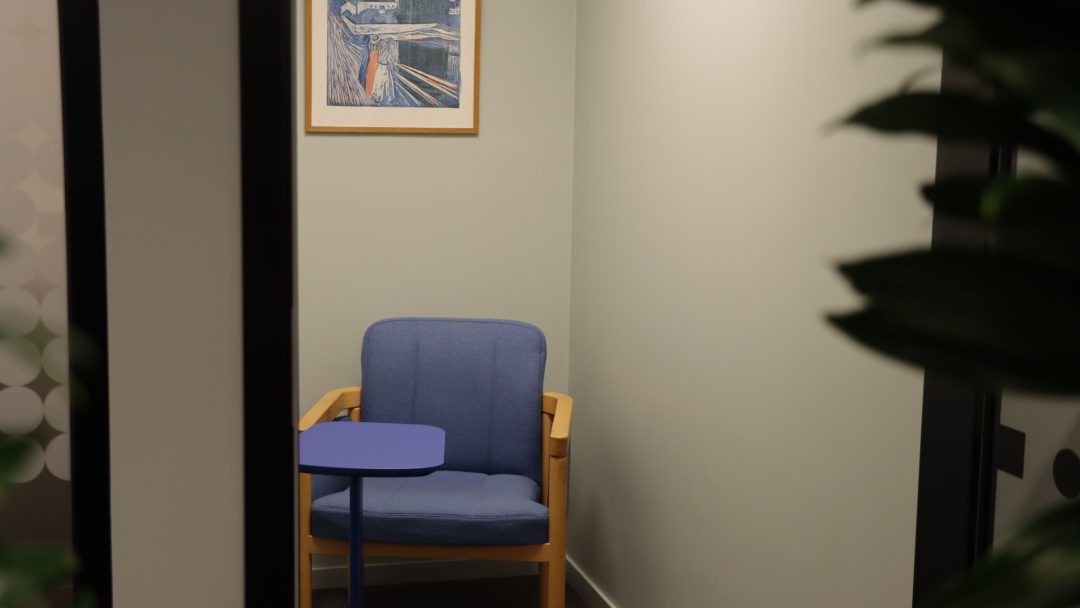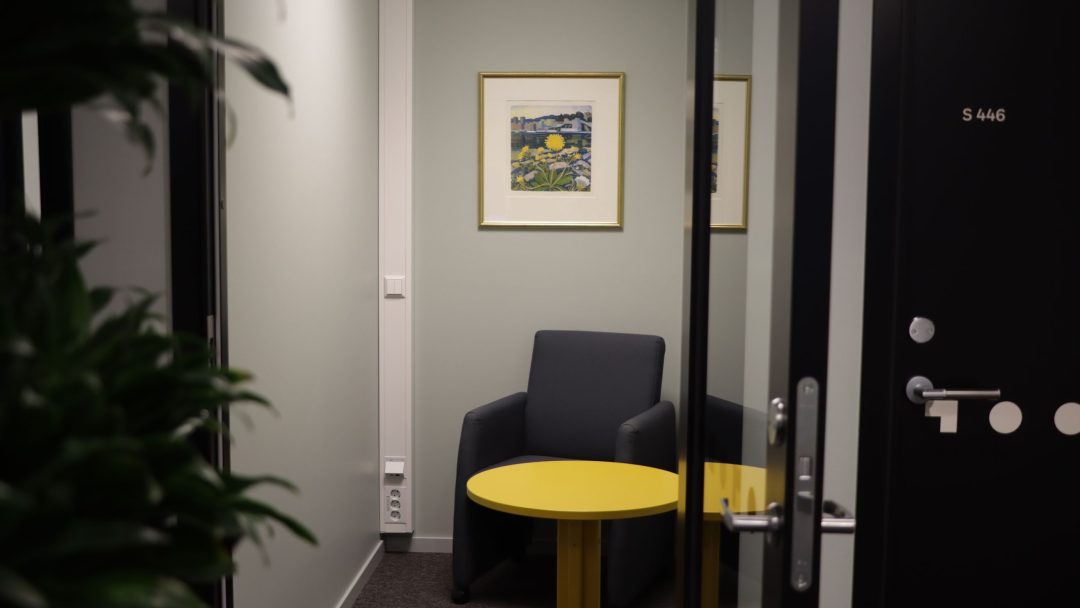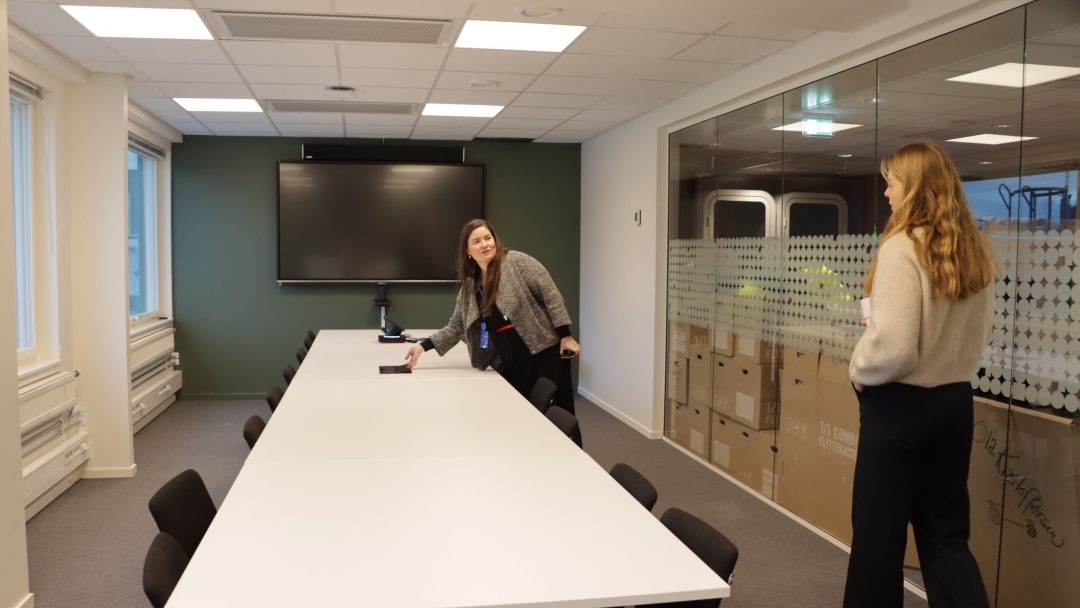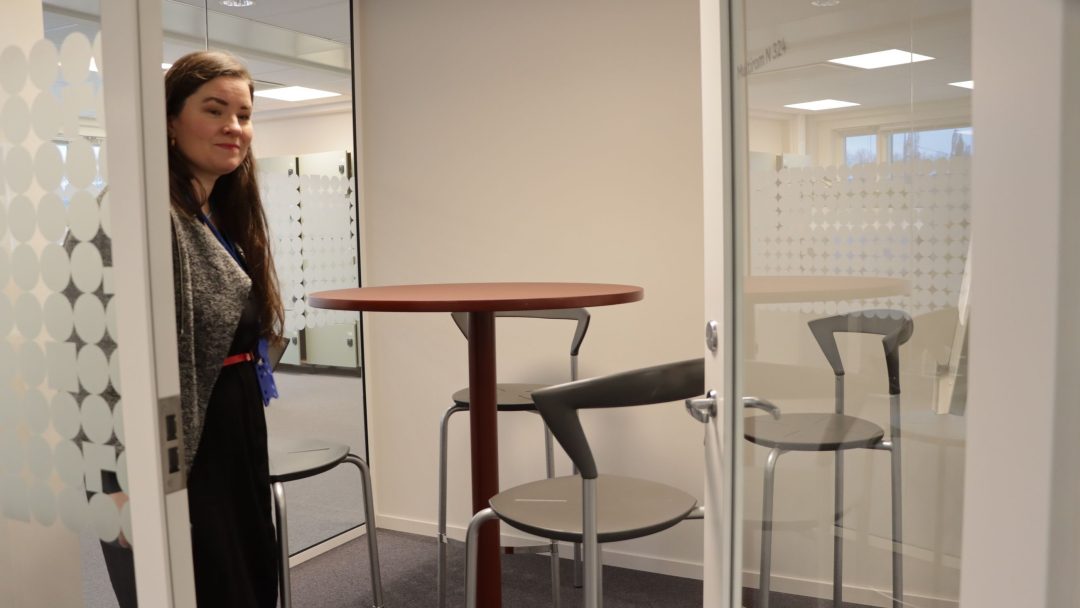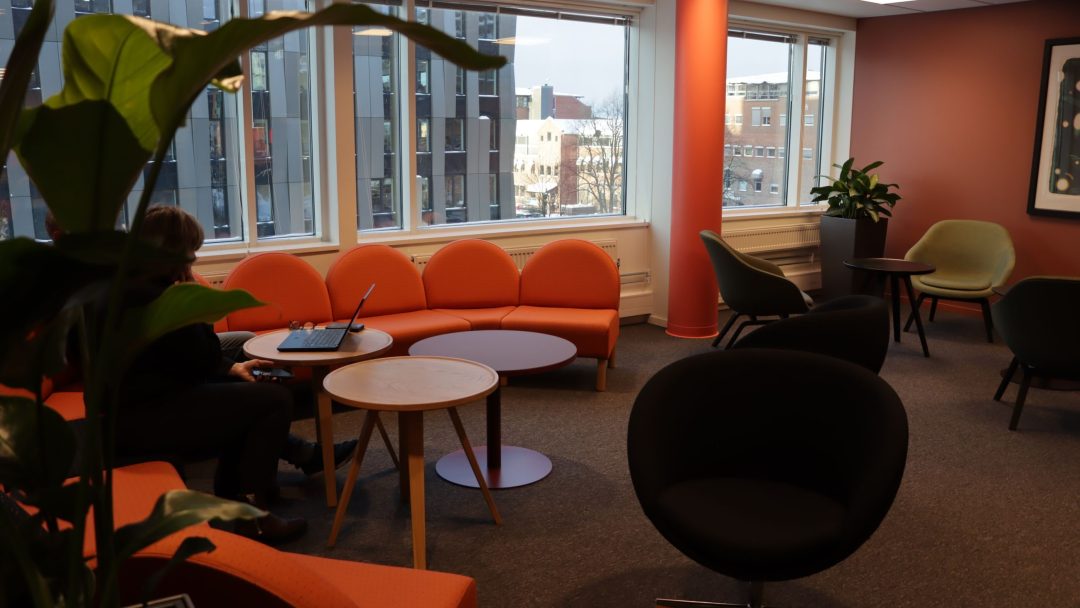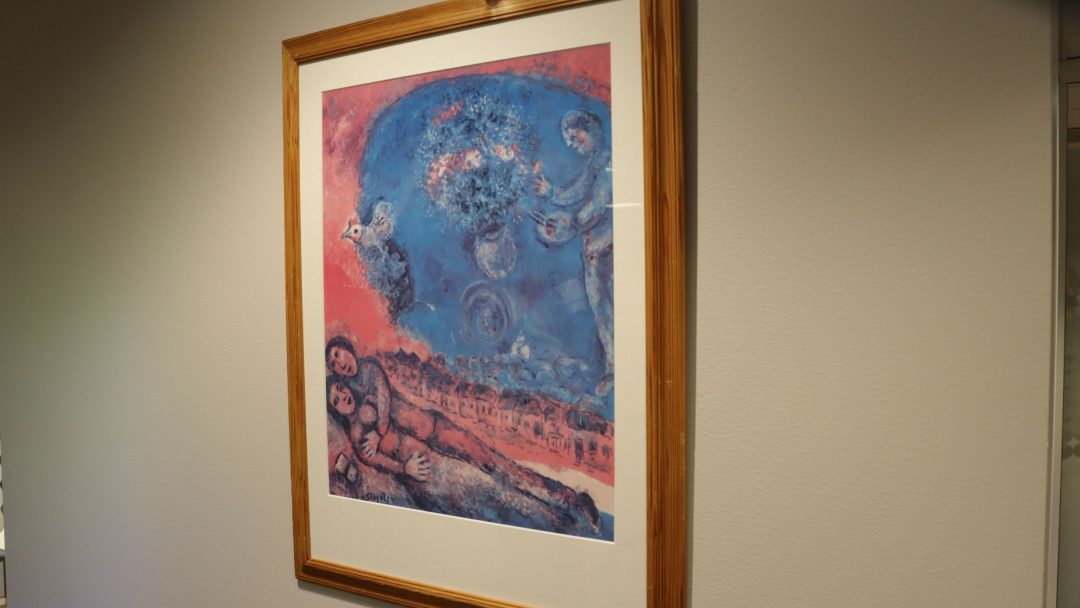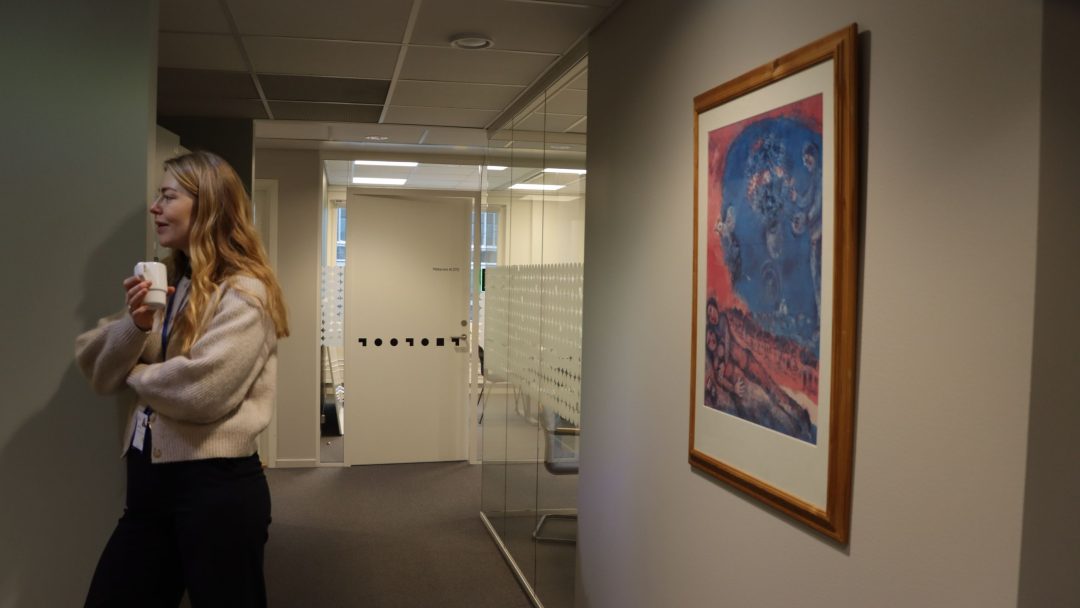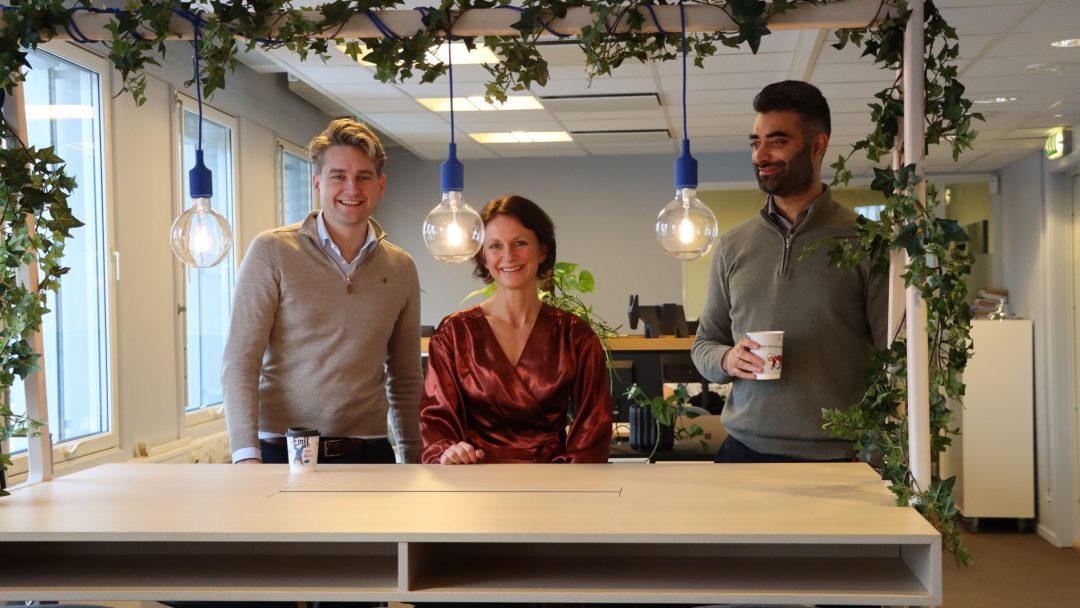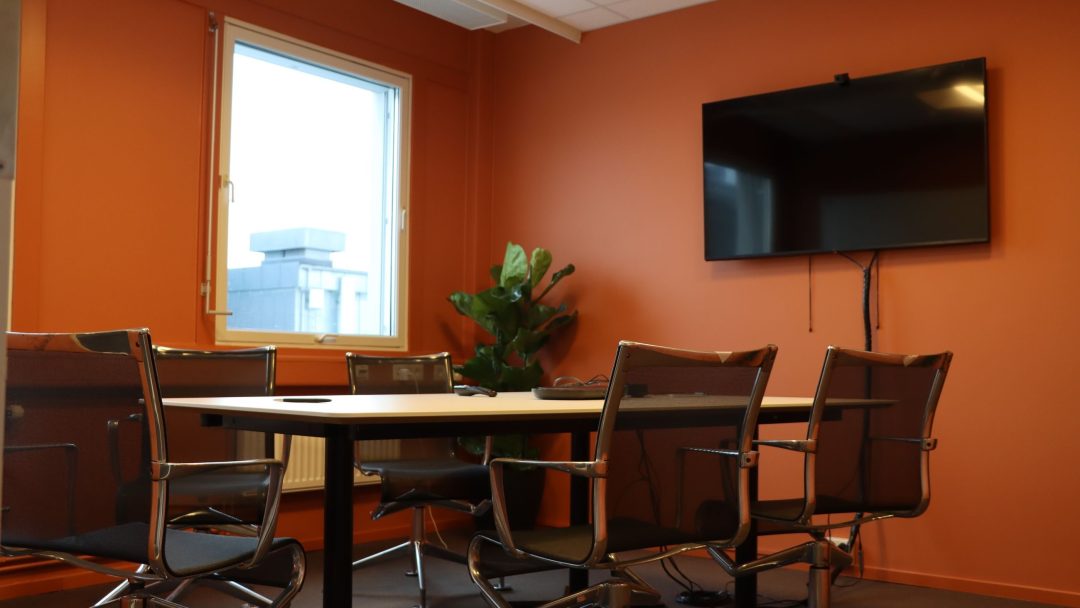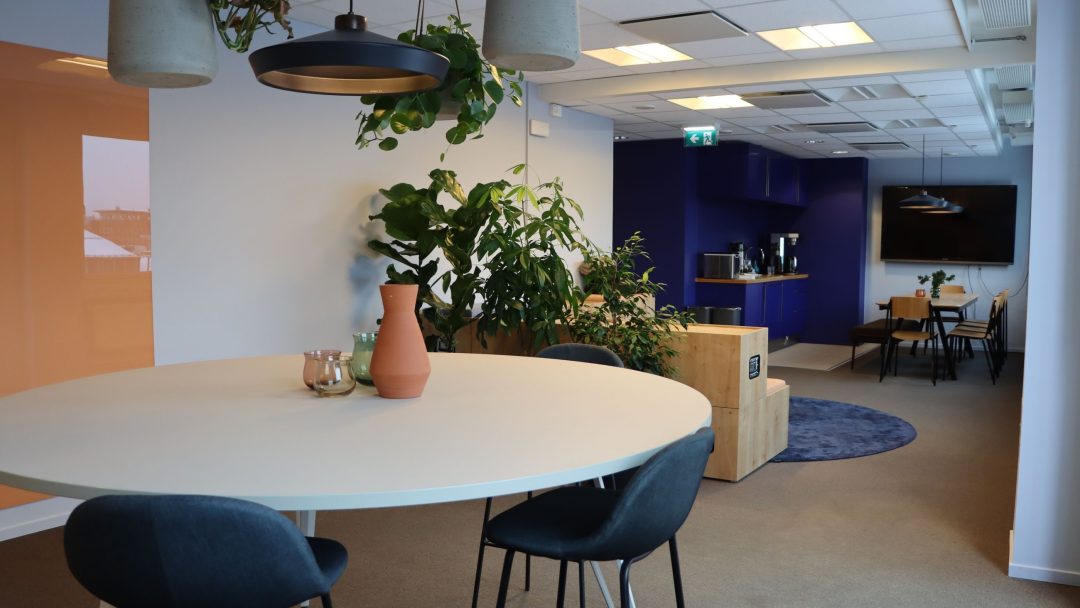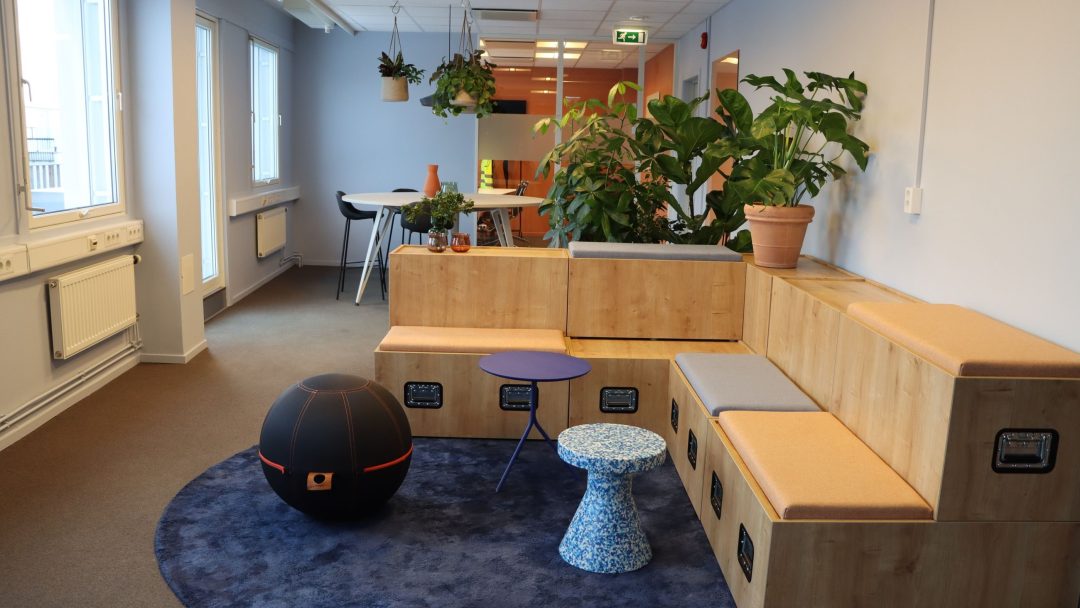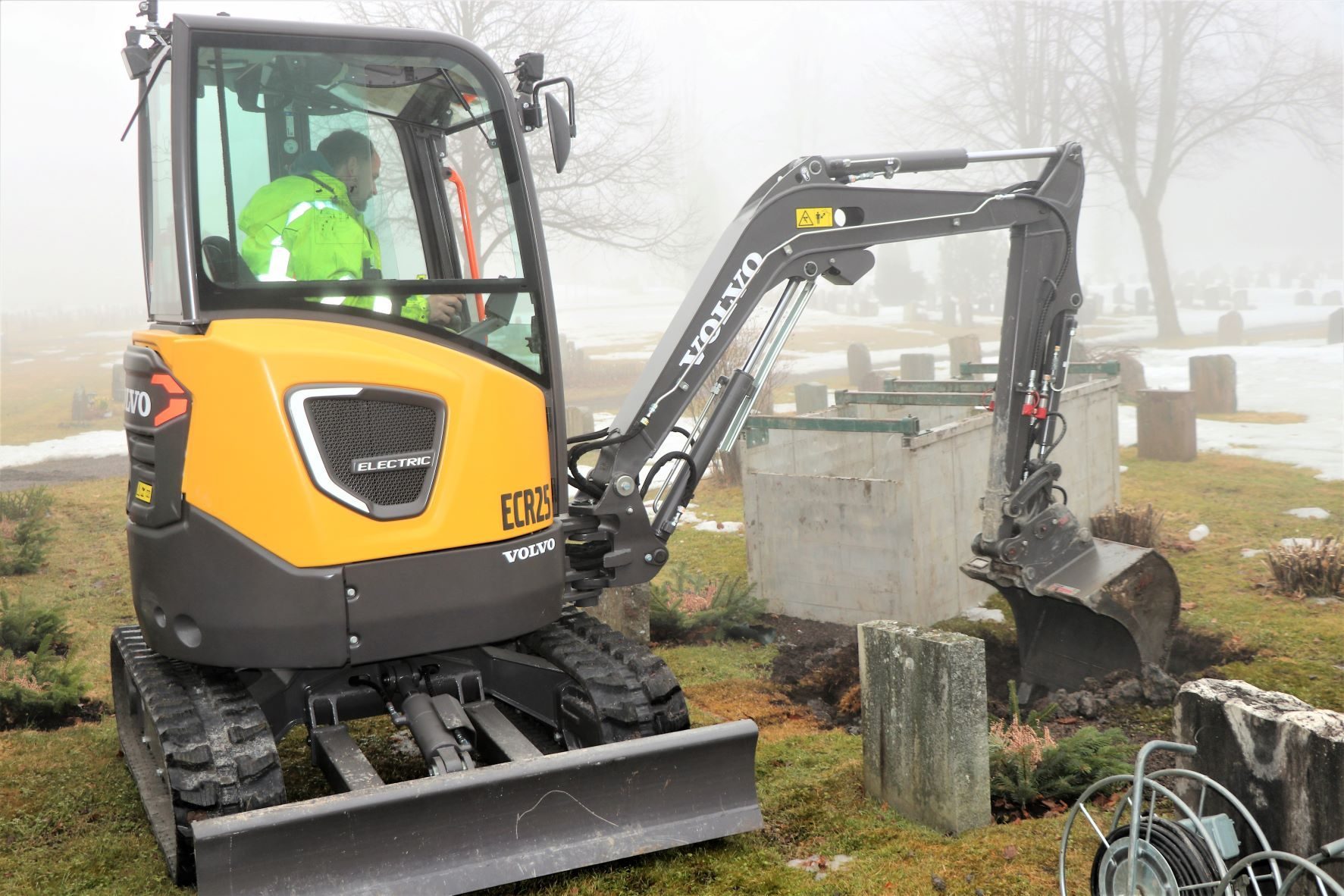Size: large
Type: image
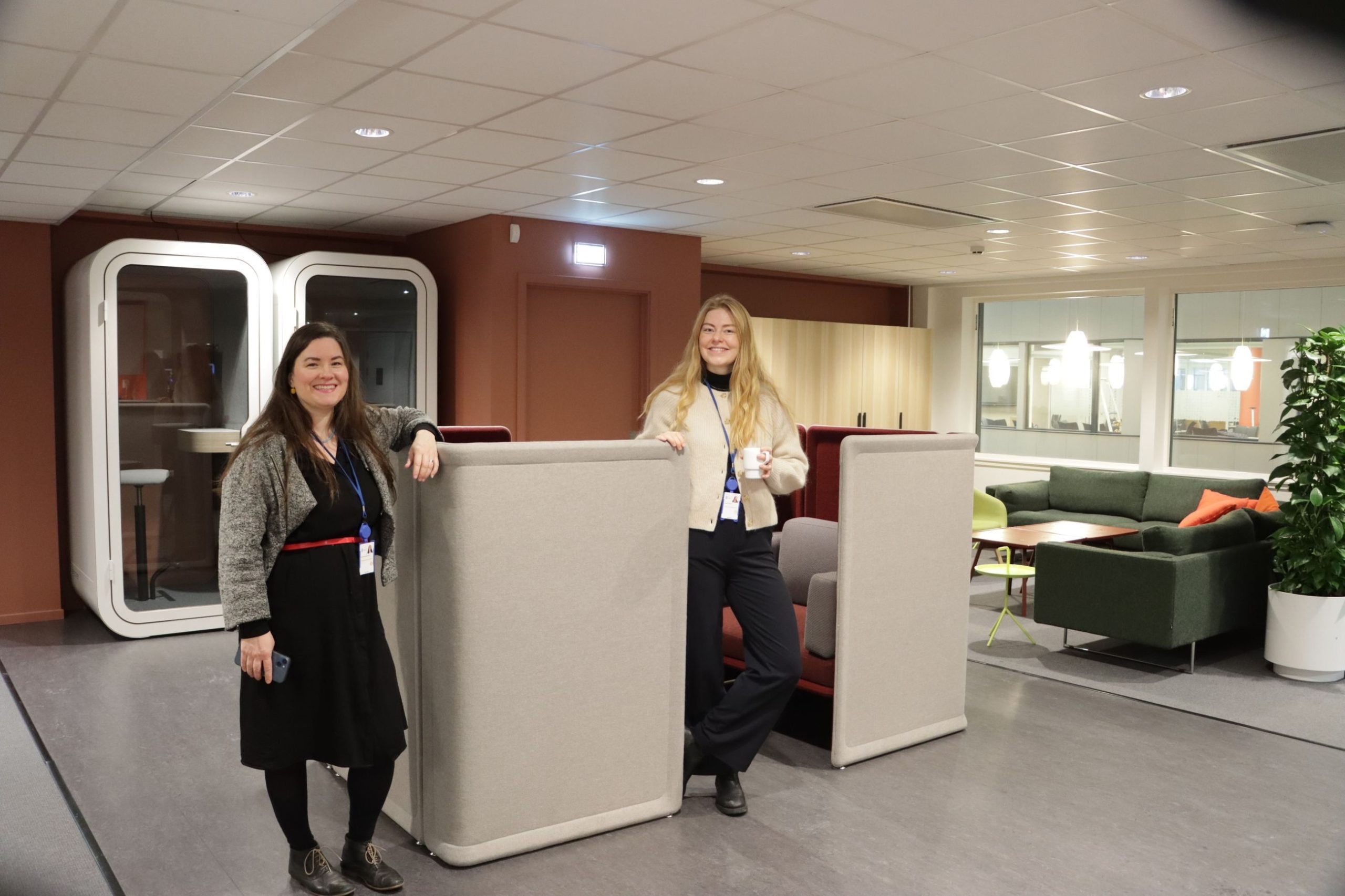
The offices of the Agency for Improvement and Development (UKE) in the City of Oslo smell of fresh paint. The agency, which employs around 600 people, has located in these facilities for several years.
When it was time to refurbish the office due to new working habits brought on by the pandemic , reuse, redesign, and the purchase of second-hand office furniture were the main focus.
«Almost everything here matches the City of Oslo’s colour palette», says project manager Cecilie Kjølnes Skar with a laugh.
«It looks very planned, but it’s mostly luck!»
More Used – Less New
Hvert år kastes 7000 tonn kontormøbler i Norge. Ofte møbler som er fullt brukelig, men som kanskje har feil farge eller design når lokaler skal pusses opp.
Every year, 7,000 tonnes of office furniture are discarded in Norway, often still usable but perhaps in the wrong colour or design for the refurbished office spaces.
Office furniture contributes to what we call indirect greenhouse gas emissions. This means products we use domestically, but where the emissions occurred during their production, often in countries other than Norway.The City of Oslo wants to significantly reduce it’s contribution to these emissions, as outlined in the «Climate Strategy for Oslo towards 2030» .
Fewer Identical Used Furniture
As mentioned, you need a bit of luck, as it’s not always easy to find identical furniture on the second-hand market exactly when you need it.
«When buying new, you can order the number you need from a catalogue», says Cecilie, explaining that it became a fun challenge to furnish several floors in the office building.
So, you must work to match different pieces of furniture together.
«Most of the furniture in our new offices is furniture we already had», says Skøien. This aligns with the quantified sustainability ambitions that guided the project. «When we needed to supplement with second-hand purchases, we had to adapt to what was available at the time and be creative in how the interior was put together.»
The solution was a comprehensive Excel sheet showing where over 3,000 pieces of furniture were stored during the refurbishment, then rearranged in a new layout.
- The City of Oslo will establish an internal reuse platform this spring.
- By «reuse,» we mean products or materials used again for the same purpose without significant processing.
- The aim is to reuse furniture and materials in other agencies or departments that need them, avoiding disposal and the need for another agency to buy new.
- The reuse platform will function like an internal Facebook Marketplace within the municipality.
- The City of Oslo purchases goods or services for NOK 31 billion a year.
Replace All Frames?
Many decisions were made along the way, such as whether to replace all the wooden frames on the artwork.
«But that would also be wasteful», says Cecilie.
Therefore, slightly worn wooden frames were retained.
«There are many good examples of how the artwork has been juggled around the building to match the colour combinations», says Ingvild.
It was a major coordination effort.
More Awareness of Reuse
There are now more suppliers of second-hand office furniture than before, making it easier to make a conscious choice.
The company CV Partner in Oslo, noticed this. The company, with 39 employees, had previously had white walls in their centrally located office. When employees returned to the office after the pandemic, they received clear hints that the premises needed an upgrade.
«We were very conscious of exploring the second-hand market for office furniture», mainly due to the company’s sustainability goals, says Erling Linde, CEO of CV Partner.
They then started a process to figure out what the office premises would be used for and what furniture they needed. Interior architect Pia Sand was tasked with scouring furniture suppliers for second-hand furniture that would fit in. Erling Linde and Bilal Safdar at CV Partner believe it is exclusively positive that they chose second-hand furniture for the office.
«It is cost-effective to think second-hand, and of course environmentally friendly – it’s a win-win», says Linde.
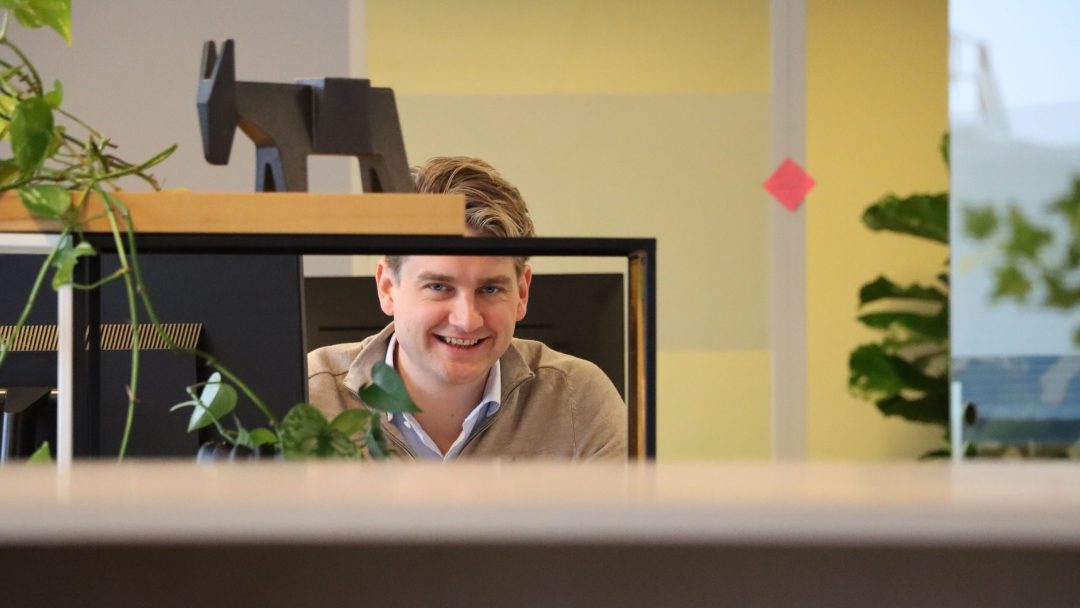
They are very pleased with the result.
What was the main consideration? Climate or economy?
«When we started, sustainability was an important factor. Then it became clear that we could buy second-hand and get it cheaply. So, it started with our sustainability strategy. But I am an economist», says Finance Manager Bilal Safdar with a laugh.
When they could get second-hand height-adjustable desks for NOK 1,200 each, which previously cost NOK 12,000 each, the economy was definitely important. Or meeting room chairs that cost NOK 7,000 new, they got for NOK 1,200.
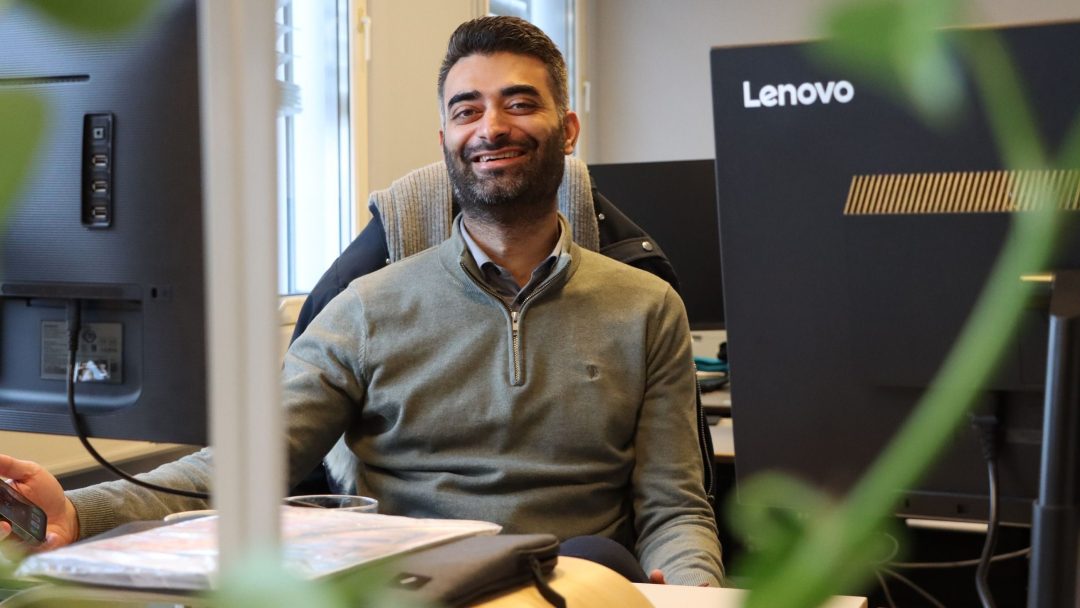
A good office environment enhances job satisfaction, which is also one of the goals in the company's sustainability strategy, says Bilal Safdar at CV Partner.
Second-Hand Office Furniture is Trending
It is more work to buy second-hand than to choose new furniture from a catalogue, says Pia Sand at Kubik Interior Architects AS.
«We used five different suppliers for this project», she says about the work for CV Partner.
It requires clients to make quick decisions about which furniture they want. Because second-hand office furniture quickly disappears from the websites selling second-hand, so you need to see the whole picture.
«It takes longer for us interior architects, but the clients save money», says Pia.
She finds it meaningful to get clients to choose second-hand.
«Getting clients to make good choices. For example, making clients think about whether we need to replace this now or if it can wait a bit. It ensures clients enjoy their work environment without impacting the environment too much», says Pia.
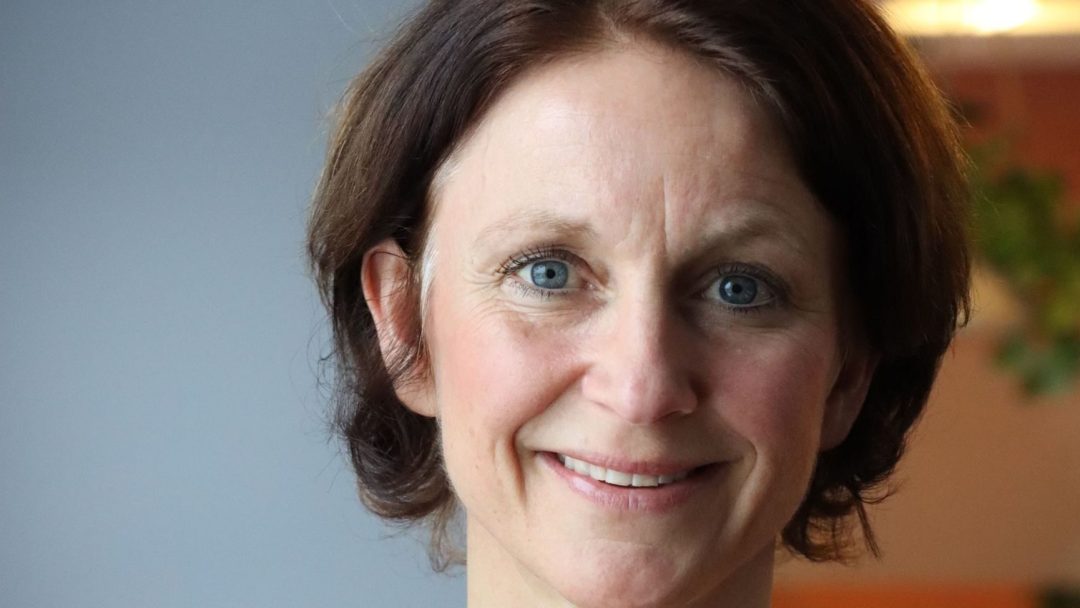
Pia Sand is keen on reuse and getting clients to choose second-hand office furniture.
There are several suppliers selling second-hand office furniture. Some suppliers traditionally selling new furniture have started portals for their own used furniture. There are several online stores for second-hand furniture:
- https://www.refurn.no/
- Secundo
- Refurnish
- Greenified
- Reinventar
- InputInteriør
- Greentable
- Møbelmeglerne
- Lindbak
- Ombygg
- Movement
Everyone Has a Responsibility…
… and the municipality should lead by example.
The City of Oslo procures goods and services for NOK 31 billion annually. This includes all types of goods and services the municipality needs. Therefore, it is important to use the power a municipality has by setting requirements for those they purchase from. The City of Oslo has also made agreements, called joint purchasing agreements, with several local companies that repair and redesign furniture.
«We have announced a joint purchasing agreement for the entire municipality, which will make used furniture more accessible to everyone in the municipality who needs furniture, whether it’s for a school or a nursing home», says Ingvild Skøien, adviser at the Agency for Improvement and Development in the City of Oslo.
In the tender competition between suppliers, the City of Oslo has rewarded suppliers who are good at offering used furniture instead of new. This should help reduce indirect greenhouse gas emissions in the City of Oslo in the future.
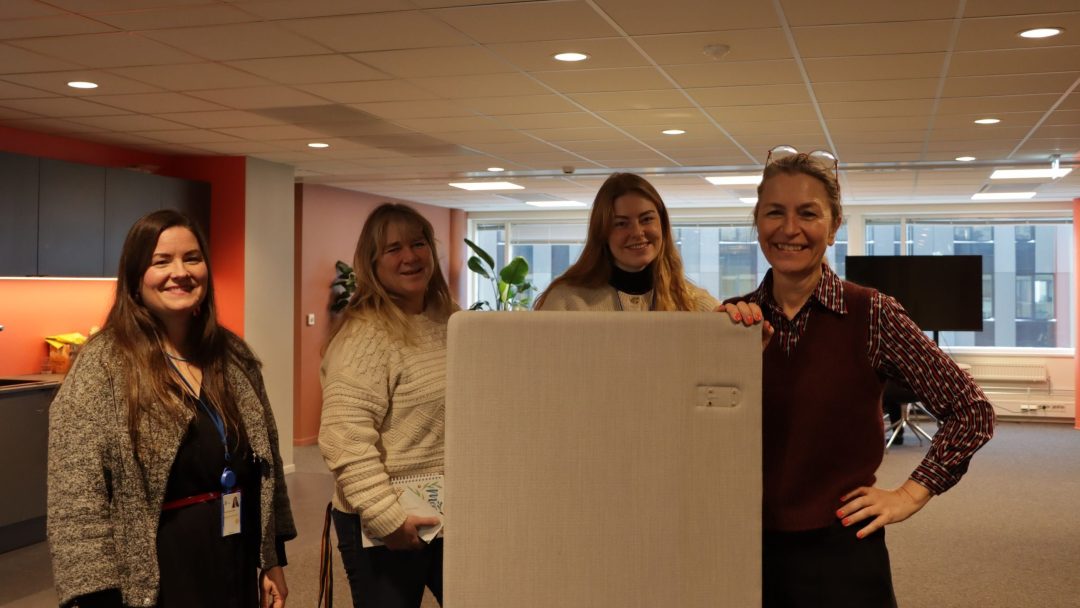
Cecilie Kjølberg Skar, Kristin Bakken, and Ingvild Skøien at UKE and Kjersti Hoel Johnson, a sustainability advisor hired to assist UKE in furnishing the newly renovated premises.
This article was translated from Norwegian with the assistance of AI.
